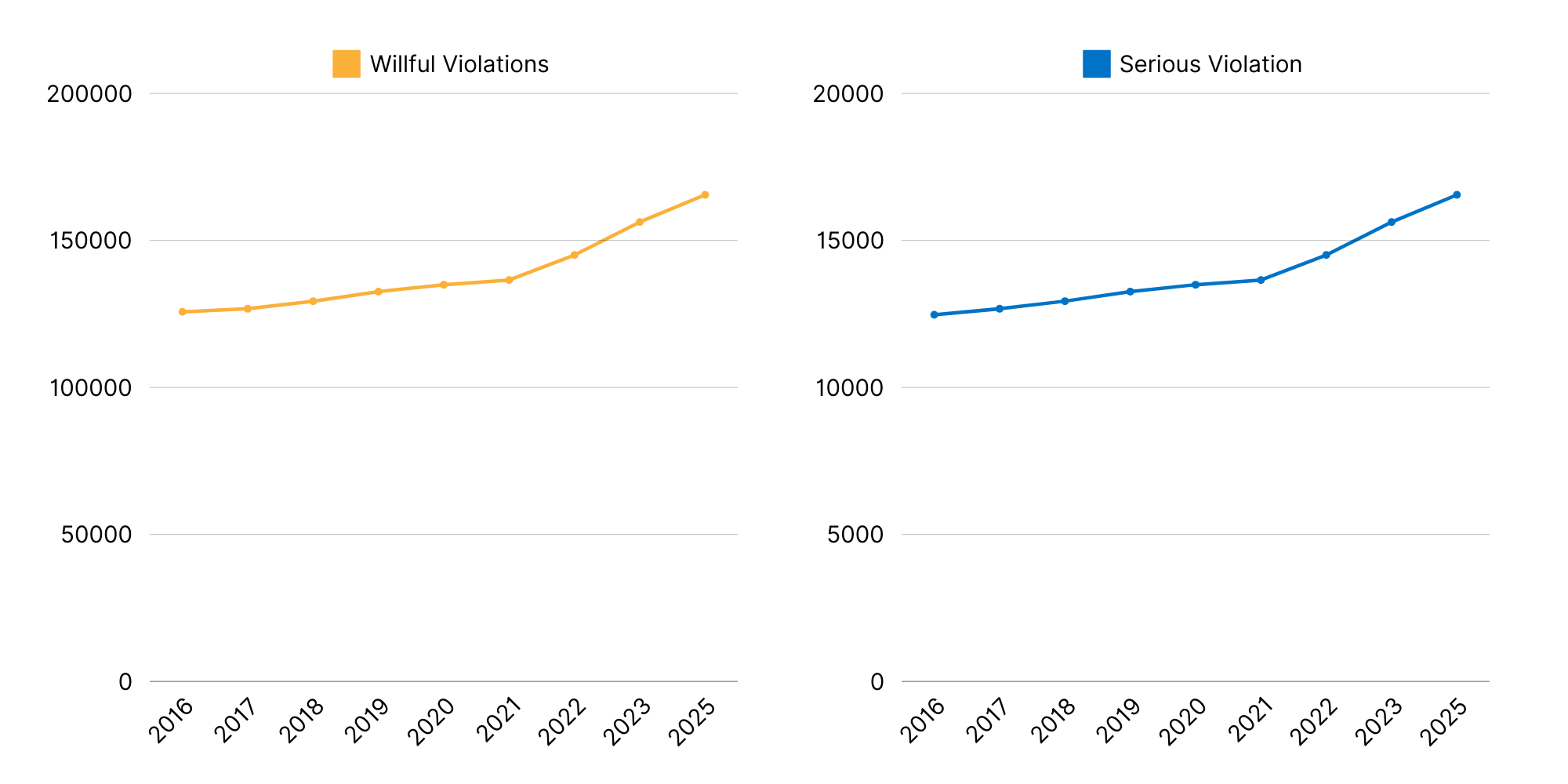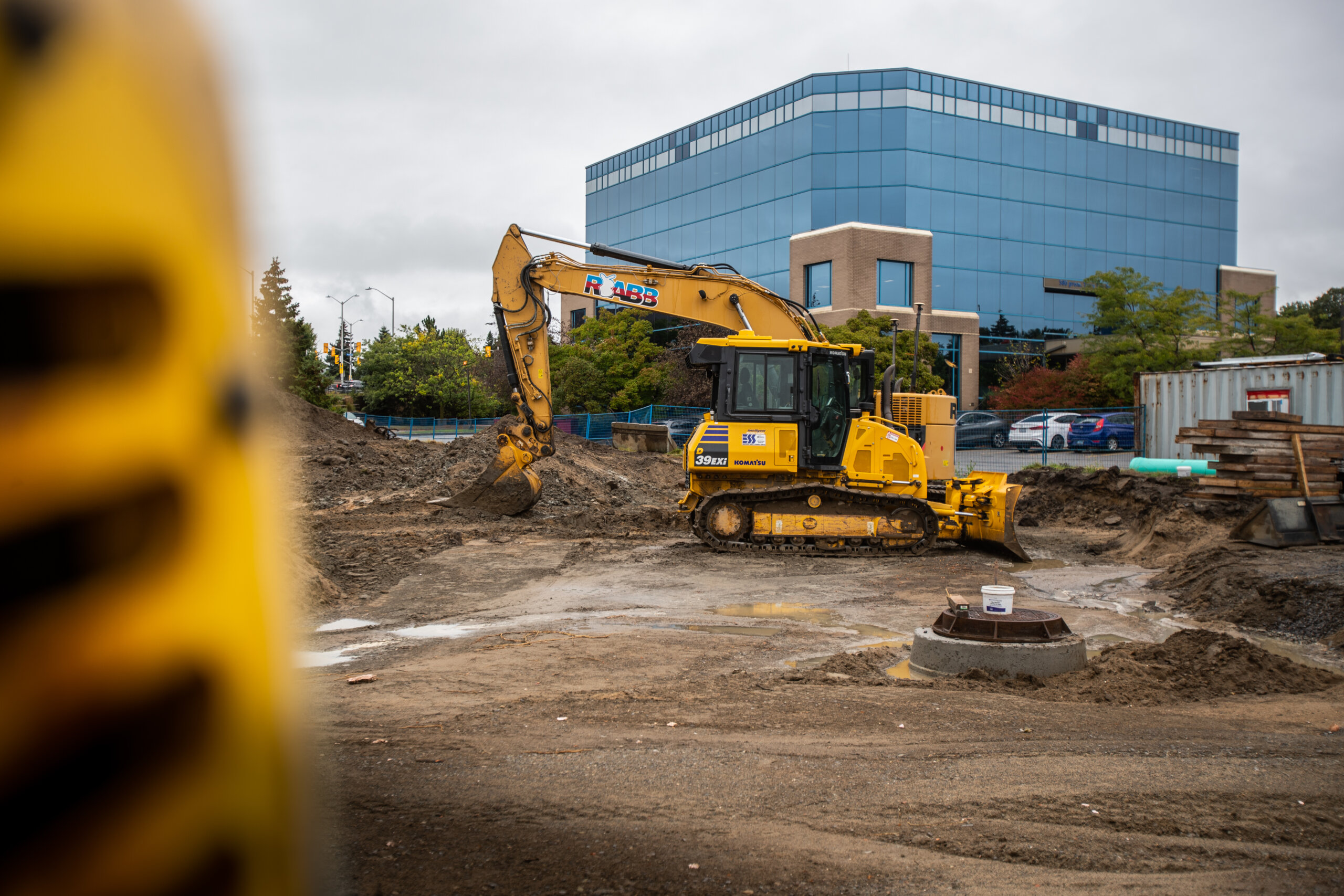TL;DR: Since 2015, OSHA fines now increase annually with inflation, ensuring penalties stay effective. For 2025, the max fines are $16,550 for serious violations and $165,514 for willful or repeat violations—so keep those job sites safe and compliant!
Workplace safety has come a long way, and the Occupational Safety and Health Administration (OSHA) has been at the center of it all. From its beginnings in the early ’70s to today, OSHA has been both a watchdog and a partner in creating safer work environments—especially for industries like construction, where risk is part of the job.
Let’s dive into OSHA’s history, the milestones that shaped its mission, how penalties evolved with inflation, and what it all means for construction professionals.
The Birth of OSHA: A New Era for Workplace Safety
In the late 1960s, workplace injuries and fatalities were alarmingly common. The construction industry, in particular, saw unacceptable levels of risk. Responding to growing public concern, President Richard Nixon signed the Occupational Safety and Health Act into law on December 29, 1970.
This legislation officially established OSHA on April 28, 1971, giving the federal government the authority to set and enforce safety standards for most U.S. workers. For the first time, there was a national framework to address workplace hazards, signaling a turning point in worker protections.
Timeline of Key Milestones
OSHA has continually evolved, responding to emerging hazards and political influences. Here’s a look at the key milestones that defined its role in workplace safety:
- 1971: OSHA is officially established.
- 1972: The first standards on asbestos are adopted, and the OSHA Training Institute is established to train compliance officers and the general public.
- 1980: Worker safety protections are expanded to cover all federal workers under an executive order.
- 1982: The Voluntary Protection Programs (VPP) are introduced to promote effective worksite-based safety and health.
- 1983: The Hazard Communication Standard is issued, ensuring workers have access to information about the hazards of chemicals they are exposed to.
- 2010: Under the leadership of Hilda Solis, then-Secretary of Labor, OSHA ramped up its enforcement efforts in 2010. Solis famously declared, “There’s a new sheriff in town,” signaling a shift toward stricter accountability for workplace safety. Her approach marked a departure from earlier years, emphasizing strong penalties for violations and prioritizing high-risk industries like construction.
2015: The Federal Civil Penalties Inflation Adjustment Act
By 2015, OSHA penalties hadn’t been adjusted for inflation in 25 years. That meant fines for workplace safety violations were far less effective as deterrents. A $7,000 fine in 1990 might have seemed significant, but by 2015, its value had eroded by more than half.
Congress passed the Federal Civil Penalties Inflation Adjustment Act Improvements Act of 2015 (yup, that’s the REAL name) to fix this problem. Here’s what it did:
- Catch-Up Adjustment: Federal agencies like OSHA were required to implement a one-time “catch-up” adjustment to align their penalties with inflation. For OSHA, this meant an immediate 78% increase in fines.
- Serious violations jumped from $7,000 to $12,471.
- Willful or repeat violations surged from $70,000 to $124,709.
- Annual Increases: To keep fines from stagnating again, the law mandated annual adjustments tied to the Consumer Price Index (CPI). This ensures penalties keep pace with inflation moving forward.
Why the Act of 2015 Matters to You Now
The act wasn’t just about adjusting numbers—it was about restoring the teeth to OSHA’s enforcement. The goal was to deter non-compliance more effectively, ensuring companies took workplace safety seriously. The construction industry, with its high risk of injuries and fatalities, saw an immediate impact as fines grew steeper.
OSHA Fines Over the Years: A Closer Look
Here’s how OSHA fines and penalties evolved over the decades:
- 1971: Maximum fines for serious violations started at $1,000.
- 1990: A major adjustment raised serious violations to $7,000 and willful or repeat violations to $70,000.
- 2016: The 2015 act’s catch-up adjustment kicked in, boosting serious violations to $12,471 and willful or repeat violations to $124,709.
- 2025: After years of annual inflation adjustments, fines have reached:
- $16,550 for serious or other-than-serious violations.
- $165,514 for willful or repeat violations.

US Presidential Administrations and OSHA
Over the years, OSHA’s approach to enforcement and regulation has been shaped by the priorities of different presidential administrations:
- Nixon (1969–1974): Established OSHA and the Occupational Safety and Health Act, laying the groundwork for modern workplace protections.
- Carter (1977–1981): Focused on strengthening OSHA’s regulatory power and issuing new standards.
- Reagan (1981–1989): Shifted OSHA’s emphasis to voluntary compliance programs, reducing the focus on enforcement.
- Clinton (1993–2001): Expanded OSHA’s enforcement efforts, targeting ergonomic and chemical hazards.
- Bush (2001–2009): De-emphasized enforcement in favor of compliance assistance programs.
- Obama (2009–2017): Introduced higher penalties and targeted enforcement in high-risk industries.
- Trump (2017–2021): Focused on deregulation and scaling back new safety standards.
- Biden (2021–2025): Renewed focus on worker protections and stricter enforcement for industries with high fatality rates, including construction.
What Evolving Fines and Penalties Means for Construction Pros
For construction companies, OSHA’s evolving regulations and penalties underscore the importance of prioritizing safety on the job site:
- Compliance Is Non-Negotiable: With fines now topping $16,000 per violation, safety lapses can have a significant financial impact.
- Safety Builds Reputation: A track record of safe job sites enhances your ability to win bids and attract top talent.
- Stay Ahead of Changes: OSHA penalties will continue to rise with inflation, making safety investments today even more valuable.
Final Thoughts
OSHA’s history is a testament to the evolving understanding of workplace safety. From its establishment in 1971 to the 2015 inflation adjustment act and beyond, OSHA has adapted to ensure workers are protected in an ever-changing landscape. For construction professionals, staying compliant isn’t just about avoiding fines—it’s about building a culture of safety that pays off in every way.
Want to simplify compliance and improve safety on your job sites? Let Corfix help you streamline your processes and protect what matters most: your people.
